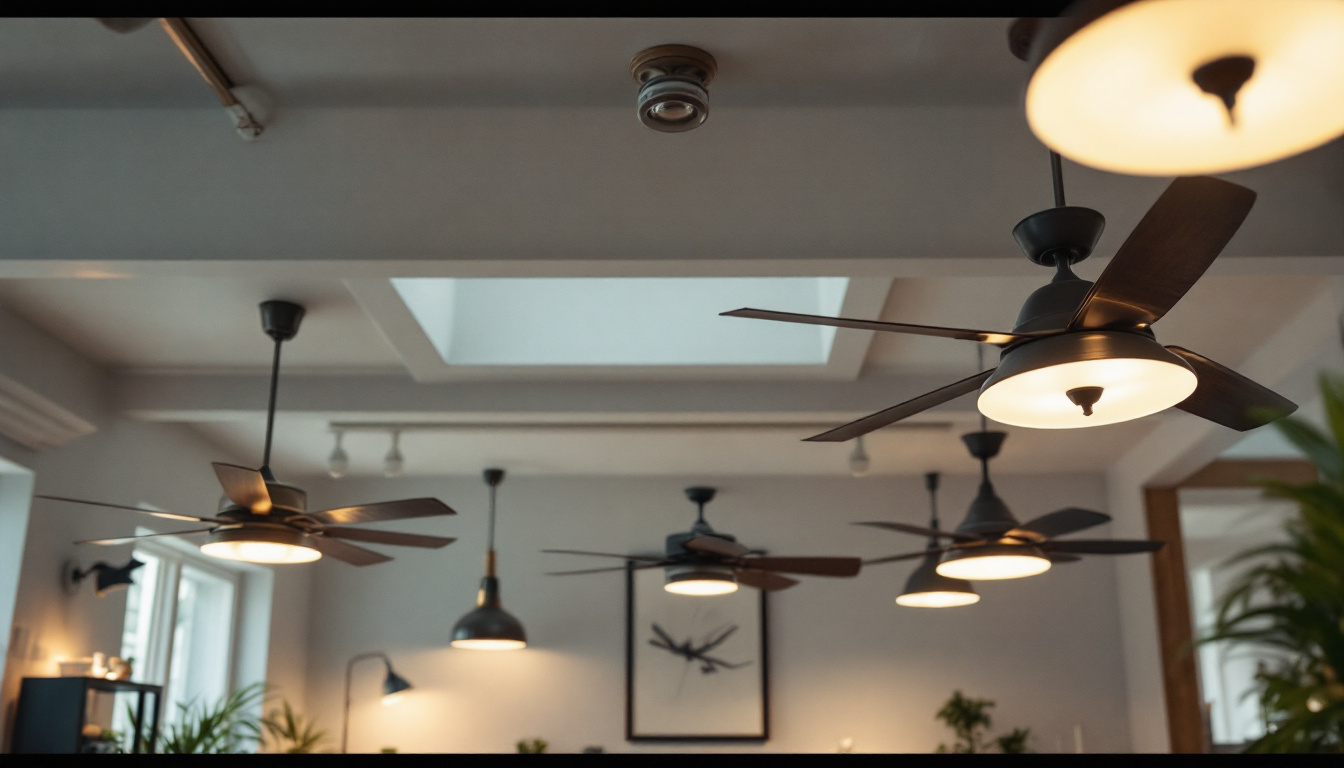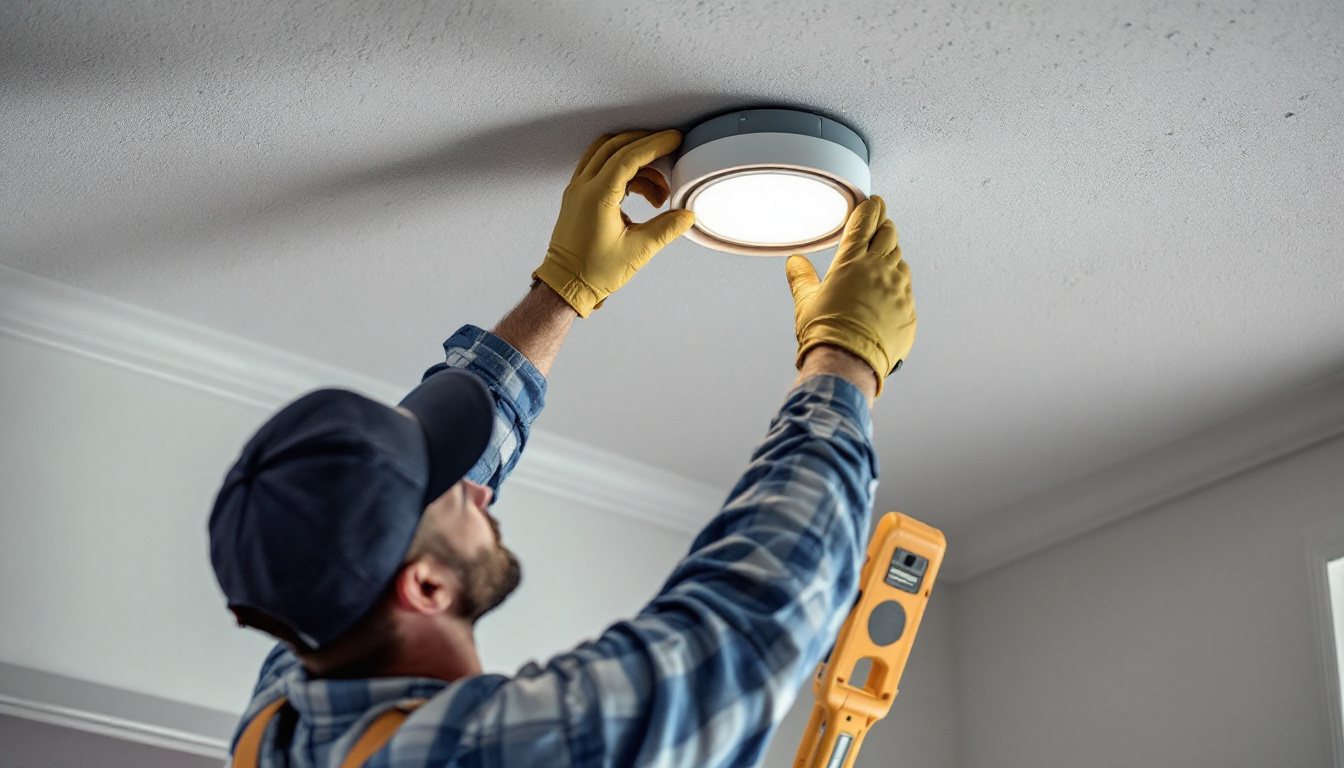

In the world of lighting design and installation, ceiling fans play a crucial role in enhancing both functionality and aesthetics. For lighting professionals, understanding the nuances of ceiling fan selection and installation is vital to delivering exceptional results. This comprehensive checklist serves as a guide for lighting contractors looking to shop for ceiling fans, ensuring that all essential factors are considered before making a purchase.
Before diving into the specifics of shopping for ceiling fans, it’s essential to grasp the basic components and functionalities that define these fixtures. Ceiling fans are not merely decorative; they serve to circulate air, improve comfort, and can even contribute to energy efficiency in residential and commercial spaces. In fact, during the warmer months, a ceiling fan can create a wind-chill effect, making a room feel cooler without the need for excessive air conditioning. Conversely, in the winter, many fans can be reversed to push warm air down from the ceiling, enhancing heating efficiency.
Ceiling fans come in various styles and types, each suited for different environments and purposes. The most common types include:
Understanding these types will help lighting professionals recommend the right fan for each specific application. Additionally, there are also specialty fans, such as hugger fans, which are designed for spaces where traditional fans may not fit, and smart ceiling fans that can be integrated with home automation systems, allowing users to control them via smartphone apps or voice commands.
When evaluating ceiling fans, several key components should be considered:
Moreover, the pitch of the blades is crucial; a steeper pitch can move more air, making the fan more efficient in its cooling capabilities. The finish of the fan also plays a role in its overall appeal, with options ranging from sleek metals to rustic woods, allowing homeowners to select a fan that complements their interior design. Additionally, energy-efficient models are now available, often featuring LED lighting and advanced motor technology, which can significantly reduce electricity consumption while providing the same level of comfort and style.
With a basic understanding of ceiling fans established, it’s time to explore the critical factors that lighting professionals should consider when selecting fans for their projects.
The size of the room and the height of the ceiling are paramount in determining the appropriate fan size and type. A fan that is too small for a large room will struggle to circulate air effectively, while a fan that is too large for a small room can overwhelm the space.
As a general guideline, fans with a blade span of 36 inches are suitable for rooms up to 75 square feet, while those with a 52-inch blade span can accommodate rooms up to 400 square feet. Additionally, for ceilings higher than eight feet, consider using downrods to ensure optimal airflow. It’s also worth noting that the fan’s height from the floor should ideally be between 7 to 9 feet to maximize comfort and efficiency. This height allows for adequate air circulation while minimizing the risk of the blades becoming a hazard.
The design of the ceiling fan should complement the overall decor of the space. Lighting professionals should consider the following styles:
Choosing a fan that aligns with the room’s decor will enhance the overall ambiance and create a cohesive look. Furthermore, it’s essential to consider the color and material of the fan blades and housing, as these elements can significantly influence the visual impact. For instance, a matte black fan can add a touch of sophistication to a modern room, while a distressed wood finish can evoke warmth in a cozy living area.
Energy efficiency is a crucial consideration for both environmental impact and cost savings. Look for ceiling fans that have earned the Energy Star label, as these models meet strict energy efficiency guidelines set by the EPA.
Additionally, consider fans with DC motors, which are typically more energy-efficient than traditional AC motors. These fans can provide substantial energy savings over time, making them an attractive option for eco-conscious clients. Beyond the motor type, features such as integrated LED lighting can further enhance energy efficiency, allowing for reduced electricity consumption while providing ample illumination. Moreover, smart ceiling fans equipped with Wi-Fi connectivity can optimize energy use by allowing users to control settings remotely, schedule operation times, and even adjust speeds based on room occupancy, making them an excellent choice for tech-savvy homeowners.
proper installation is essential for the optimal performance of ceiling fans. Lighting professionals should be well-versed in the installation requirements and best practices to ensure safety and efficiency. A well-installed ceiling fan not only enhances the aesthetic of a room but also maximizes airflow, contributing to energy savings by reducing reliance on air conditioning during warmer months.
Ceiling fans can be mounted in several ways, including flush mount, downrod mount, and angled mount. The choice of mounting option will depend on the ceiling height and the fan design. Each mounting type serves a specific purpose and can significantly affect the fan’s performance and the overall comfort of the space.
Flush mount fans are ideal for low ceilings, providing a sleek look without sacrificing headroom, while downrod mounts are suitable for higher ceilings, allowing for better airflow by positioning the fan closer to the optimal height for air circulation. Angled mounts may be necessary for sloped ceilings, ensuring that the fan hangs level and operates effectively. It’s also worth noting that some fans come with adjustable downrods, providing flexibility for various ceiling heights and ensuring that the fan is installed at the most effective height for airflow.
Before installation, it’s crucial to assess the electrical requirements of the ceiling fan. Ensure that the existing electrical box can support the weight and operation of the fan. If not, a more robust box may need to be installed. This step is critical, as an inadequate electrical box can lead to dangerous situations, including the risk of the fan falling or electrical fires.
Additionally, consider the wiring and switch options. Some fans may require a dedicated circuit, especially those with integrated lighting or advanced control features. It’s also beneficial to explore smart ceiling fan options that can be controlled via mobile apps or voice commands, which may require specific wiring configurations. Proper grounding and adherence to local electrical codes are essential for ensuring the safety and longevity of the installation. Furthermore, it is advisable to consult with a licensed electrician if there are any uncertainties regarding the electrical setup, as this can prevent costly mistakes and enhance the overall safety of the installation process.
The control system of a ceiling fan can significantly impact its usability and convenience. Lighting professionals should evaluate the various control options available to match client preferences and project requirements.
Pull chains are a traditional method for operating ceiling fans, allowing users to control the fan speed and light with a simple pull. However, wall switches provide a more integrated solution, allowing for easier access and control.
Consider recommending wall switches with multiple settings, enabling users to adjust fan speed and lighting levels seamlessly. This can enhance user experience and satisfaction.
For clients seeking modern convenience, remote controls and smart technology options are increasingly popular. Remote controls can allow users to operate the fan from anywhere in the room, while smart ceiling fans can be integrated into home automation systems.
Smart fans often come with features such as app control, voice activation, and programmable settings, providing an additional layer of convenience and customization.
Once installed, ceiling fans require regular maintenance to ensure longevity and optimal performance. Lighting professionals should educate clients on proper care and maintenance practices.
Ceiling fans can accumulate dust and debris over time, which can affect their performance and aesthetics. Regular cleaning is essential to maintain both functionality and appearance. Advise clients to use a microfiber cloth or a fan blade cleaner to wipe down the blades and motor housing.
It’s also advisable to clean the fan at least once a season, especially in areas with high dust levels or pollen. This simple maintenance task can prolong the life of the fan and improve indoor air quality.
Regularly checking for loose screws and parts is another vital maintenance task. Over time, vibrations can cause screws to loosen, leading to potential safety hazards. Encourage clients to inspect their fans periodically and tighten any loose components.
Additionally, checking the fan’s balance can prevent wobbling and noise. If a fan wobbles, it may need to be adjusted or balanced with weights.
Shopping for ceiling fans involves much more than simply picking a design that looks appealing. For lighting professionals, understanding the technical specifications, installation requirements, and maintenance needs is essential to delivering high-quality results.
By following this essential checklist, lighting contractors can ensure they select the right ceiling fans for their projects, ultimately enhancing the comfort and aesthetic appeal of the spaces they work in. With the right knowledge and considerations, ceiling fans can be a valuable addition to any lighting design, providing both functionality and style.
Ready to elevate your lighting projects with the finest ceiling fans on the market? Look no further than LumenWholesale, where we provide lighting professionals with high-quality, spec-grade products at unbeatable wholesale prices. Say goodbye to local distributor markups and hello to our extensive selection that meets the highest industry standards. With free shipping on bulk orders, you can trust that you’re getting premium lighting at the best value — without any hidden fees. Enhance the comfort and style of your spaces with ease. Visit LumenWholesale today and experience the perfect blend of quality, affordability, and convenience.

Discover how Hi-Lite technology is transforming the lighting industry by significantly reducing costs for contractors.

Discover essential tips for lighting contractors to prevent common pitfalls with canister light covers.

Discover the transformative power of lighting strips with expert insights from top lighting contractors.

Discover the essential insights lighting contractors need to know about motion sensor lights.
Get notified when NEW deals are released.
Optimize your budget with wholesale discounts.
Only top-quality, specification-grade lighting products.
No additional costs at checkout - what you see is what you pay.
We understand the unique needs of contractors.